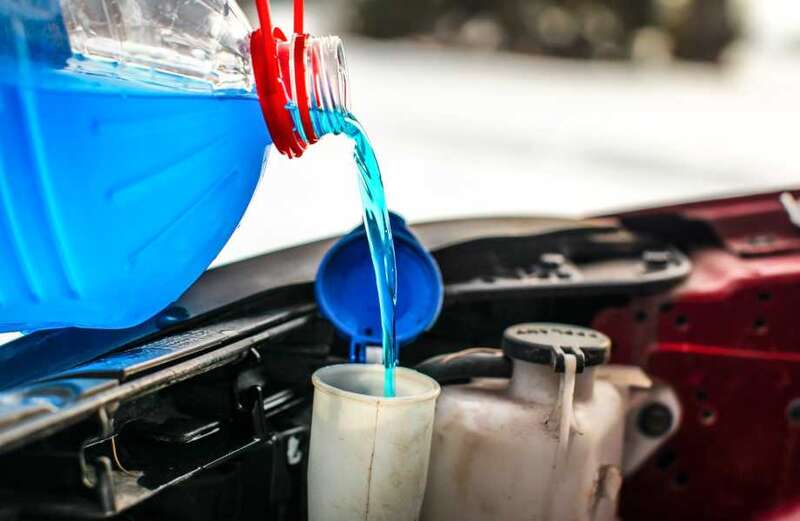COOLANT, or as you might know it, antifreeze, helps your car engine maintain an even temperature during extreme hot and cold weather.
Coolants come in different colours -- such as red and ink - to indicate their use and the difference in their production formula. So can the colours be mixed?

Can I mix red and pink coolant?
It's always a good idea to check which coolant the car manufacturer recommends by looking at the manual before adding any.
If you don't have a handbook then check with the dealer.
Coolants come in a variety of colours so you should also check the label on the bottle for any instructions.
 Are there illegal baby names? Surprising monikers that are BANNED in other countries, from Sarah to Thomas
Are there illegal baby names? Surprising monikers that are BANNED in other countries, from Sarah to Thomas
There are some coolants which you can mix together, with red and pink coolants considered to be compatible.
However, if you don't have to, you should hold back from doing so, as different manufacturers make different coloured coolants.
The red coolant may shorten the life of the pink, causing less effect from its usage.
And mixing different types and colours could result in sludge, although if you are using good quality products this should not happen.
It's a good idea to keep a note of which coolant you have used so that you know for any future top-ups.
What is the difference between red and pink coolant?
The pink coolant is an OAT - organic acid technology.
It includes the following substances:
- Water (7732-18-5)
- Ethylene Glycol (107-21-1)
- Diethylene Glycol (111-46-6)
- Sebacic Acid (111-20-6)
- Potassium Hydroxide (1310-58-3)
Pink coolant is considered to have a longer service life, while on the other hand, red coolant is more "conventional".
It still lasts long, however, not as much as the pink.

The red is an IAT - inorganic acid technology - and is made out of the following substances:
 All about Rachel Nickell who was murdered in front of her son Alex Hanscombe
All about Rachel Nickell who was murdered in front of her son Alex Hanscombe
- Ethylene Glycol (107-27-1)
- Diethylene Glycol (111-46-6)
- Water (7732-18-5)
- Organic Acid Salt (532-32-1)
- Hydrated Inorganic Salt (1310-58-3)
What colour coolant should I use?
To find out which colour coolant you should use, check your car manual, which contains information on how to maintain your vehicle.
You'll find other colour coolants such as green, blue, yellow and orange.
Older cars used blue and green coolants which are called IAT -Inorganic Additive Technology.
These could last for two years or 60,000 miles.
But as car manufacturing developed, so did coolants and you'll find the OATs or a mix of both OAT and IAT, which are called hybrids, that'll last longer.
Modern cars - those probably manufactured after 1998 - use these and they can last for five years or 100,000 miles.
There has also been the creation of another coolant which is solely based on OAT.
It can last up to 10 years or 300,000 miles.
What happens if you use the wrong colour antifreeze?
The choice of antifreeze is crucial for both the compatibility and overall health of your engine.
Using the wrong color antifreeze or mixing different types can cause serious damage to your car's engine and its cooling system.
Here are some things to consequences of using or mixing the wrong antifreeze:
- Freezing: Using the wrong antifreeze can cause freezing within the cooling system.
- Gelling: Incompatible coolants can react and form a gel that clogs the cooling system, which can lead to overheating.
- Leaks: Using the wrong coolant can cause water pumps to leak, which can lead to loss of coolant.
- Corrosion: Using the wrong antifreeze can cause corrosion within the cooling system, including the radiator and water pump.
- Sludge: Mixing different coolants can create sludge and other deposits that can affect efficiency.
If you do make the mistake of using the wrong antifreeze your car system will need flushing.
Contact your dealership or a recommended mechanic to acquire a quote.































